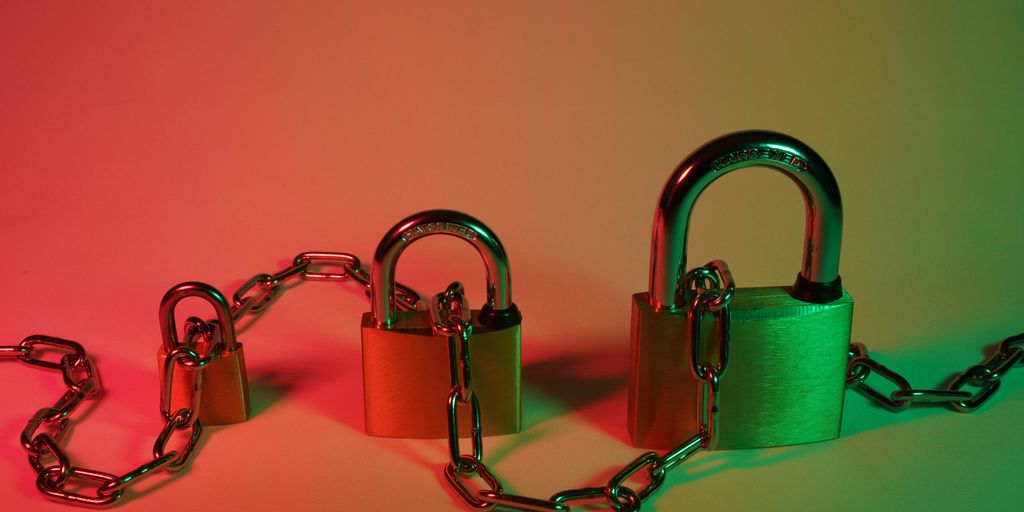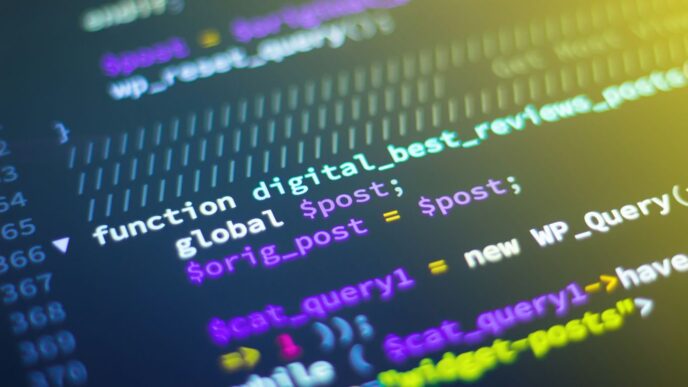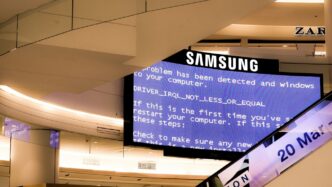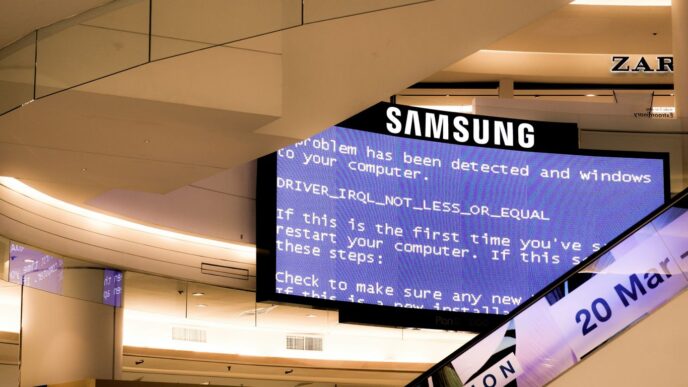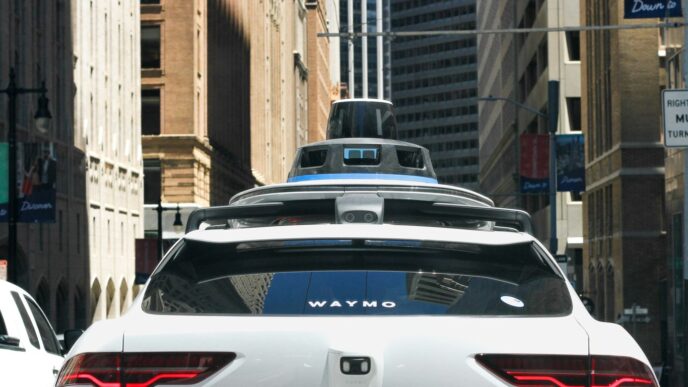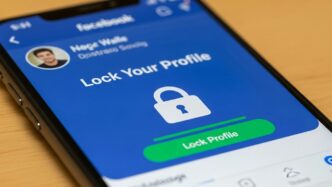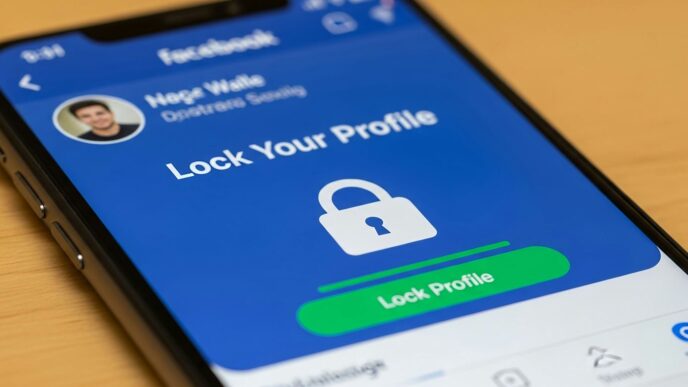So, you’ve probably heard about computer bugs, right? Well, sometimes these bugs can be a real problem, especially when they let bad guys get control of your computer. Today, we’re going to talk about one of those bugs: CVE-2022-41125. This one affects Microsoft Windows, and it’s pretty important because it can give an attacker a lot of power over your system. We’ll break down what it is, how it works, and what you can do to protect yourself.
Key Takeaways
- CVE-2022-41125 is a serious bug in Windows that lets a local user gain high-level access.
- This bug is a “buffer overflow” in the Windows CNG Key Isolation Service.
- Attackers can use a special program to take over your system with “SYSTEM” privileges.
- Microsoft has released a patch, and it’s important to update your system right away.
- Staying updated and using good security practices can help protect you from these kinds of attacks.
Understanding CVE-2022-41125: A Critical Overview
What is CVE-2022-41125?
CVE-2022-41125 is a significant security vulnerability found in the Windows CNG Key Isolation Service. It’s an elevation of privilege vulnerability, meaning an attacker who successfully exploits it can gain higher-level access to a system than they should normally have. Microsoft was alerted to this flaw, and it’s important to understand what it means for your system’s security. It’s one of several vulnerabilities, including CVE-2022-41073 affecting the Windows Print Spooler, that were addressed in a recent security update.
Impact of the Vulnerability
The impact of CVE-2022-41125 can be pretty severe. If exploited, an attacker could potentially:
- Gain unauthorized access to sensitive data.
- Install malicious software.
- Take control of the affected system.
- Modify system settings.
This is especially concerning because it allows attackers to potentially move laterally within a network, compromising other systems. The vulnerability allows attackers to gain SYSTEM-level access on a Windows system.
Active Exploitation in the Wild
While there’s no widespread news of active exploitation as of today, it’s crucial to stay vigilant. The fact that multiple researchers independently reported this vulnerability might suggest that it’s been discovered by more than just security researchers. This increases the likelihood of it being exploited, so applying the patch is really important. It’s similar to other vulnerabilities where rapid root cause analysis was needed due to active attacks.
Technical Deep Dive into CVE-2022-41125
Buffer Overflow Mechanism
Okay, so let’s get into the nitty-gritty of how CVE-2022-41125 actually works. It all boils down to a classic buffer overflow. Imagine you have a container that can only hold a certain amount of liquid. If you try to pour more liquid than it can hold, it spills over. That’s basically what happens here, but with data. The vulnerability occurs because the Cryptography Next Generation (CNG) component doesn’t properly validate the size of the input before copying it into a buffer. This means an attacker can send a specially crafted input that’s larger than the buffer, causing it to overflow and overwrite adjacent memory regions. This can lead to all sorts of problems, including arbitrary code execution.
- The overflow happens in the kernel, which is bad news.
- Attackers can control the overflowed data to inject malicious code.
- Proper input validation would have prevented this.
Windows CNG Key Isolation Service
The Windows CNG Key Isolation service is supposed to protect cryptographic keys. It’s designed to isolate keys from processes, so even if a process is compromised, the keys remain safe. However, CVE-2022-41125 bypasses this protection. The vulnerability resides within cng.sys, a core component of the CNG architecture. When a malicious program exploits the buffer overflow, it can gain control over the execution flow within the CNG Key Isolation service. This allows the attacker to perform actions with the privileges of the service, effectively breaking the isolation. It’s like finding a secret passage into a supposedly secure vault. This is where cybersecurity consulting becomes important, as they can help identify such vulnerabilities.
Achieving SYSTEM Privileges
The ultimate goal for many attackers is to gain SYSTEM privileges, which is basically the highest level of access on a Windows system. CVE-2022-41125 makes this possible. By exploiting the buffer overflow in the CNG component and taking control of the CNG Key Isolation service, an attacker can then execute code with SYSTEM privileges. This means they can do pretty much anything they want on the system, including installing software, modifying data, and creating new user accounts. It’s like getting the keys to the kingdom. Think about it: you start with limited access, then exploit a flaw to jump to the highest level. Here’s a simplified view:
| Step | Action | Privilege Level |
|---|---|---|
| 1 | Initial access (e.g., local user) | User |
| 2 | Exploit CVE-2022-41125 | CNG Service |
| 3 | Execute code with SYSTEM privileges | SYSTEM |
This is why timely security patches are so important.
Severity and Classification of CVE-2022-41125

CVSSv3 Base Score Analysis
Okay, so let’s talk about how bad CVE-2022-41125 really is. The Common Vulnerability Scoring System version 3 (CVSSv3) gives it a base score. This score is important because it helps everyone understand the potential impact of the vulnerability. A higher score means a more severe vulnerability. While I don’t have the exact score right here, these scores usually take into account things like how easily the vulnerability can be exploited and what kind of damage an attacker could do.
Elevation of Privilege Category
CVE-2022-41125 falls into the "Elevation of Privilege" category. What does that mean? Well, imagine a regular user on a computer suddenly getting the same permissions as the administrator. That’s basically what this vulnerability allows. An attacker who successfully exploits it can gain higher-level access to the system, letting them do things like:
- Install programs
- View, change, or delete data
- Create new accounts with full user rights
It’s like giving the keys to the kingdom to someone who shouldn’t have them. This is why elevation of privilege vulnerabilities are taken so seriously.
Comparison with Other Vulnerabilities
To really understand the severity, it helps to compare CVE-2022-41125 to other vulnerabilities. For example, ransomware protection technology is a big deal right now, and vulnerabilities that can be used to spread ransomware are obviously high-priority. Similarly, remote code execution vulnerabilities, where an attacker can run code on your system from somewhere else, are also super dangerous. Here’s a quick comparison table:
| Vulnerability | Type | Potential Impact |
|---|---|---|
| CVE-2022-41125 | Elevation of Privilege | Full system control |
| CVE-2022-21849 | Remote Code Execution | Remote code execution |
| CVE-2022-30196 | Denial of Service | System crashes |
As you can see, while the specific impact varies, elevation of privilege can be just as bad as other high-severity vulnerabilities because it gives attackers a foothold to do pretty much anything they want. Keeping up with timely security updates is important.
Exploitation Vectors for CVE-2022-41125
Local User Exploitation
CVE-2022-41125 is a local privilege escalation vulnerability, meaning an attacker needs to already have some level of access to the system to exploit it. This doesn’t mean it’s not serious; it just changes the attack scenario. Think of it like this: the attacker has already picked the lock on your front door (gained initial access) and now they’re using this vulnerability to get the keys to the whole house (SYSTEM privileges).
- An attacker could use malware they’ve already installed to trigger the vulnerability.
- They might exploit another vulnerability to gain initial access, then use CVE-2022-41125 to escalate their privileges.
- Social engineering could trick a user into running a malicious program that then exploits the vulnerability.
Specially Crafted Programs
The most common way to exploit CVE-2022-41125 is through a specially crafted program. This program is designed to trigger the buffer overflow in the Windows CNG Key Isolation service. The program would be written to send specific data to the service, overflowing the buffer and allowing the attacker to overwrite memory with their own malicious code. This code then executes with SYSTEM privileges. It’s like writing a letter with invisible ink that, when heated, reveals instructions to take over the building. There are many examples of this, such as Trend Micro Endpoint Security receiving a
Mitigation and Remediation for CVE-2022-41125
Microsoft’s Official Patch
Okay, so Microsoft dropped a patch for CVE-2022-41125, and honestly, getting it installed should be your top priority. This patch directly addresses the buffer overflow vulnerability in the Windows CNG Key Isolation service. Think of it like patching a hole in your boat – the longer you wait, the more water (or in this case, attackers) gets in. You can usually find the patch through Windows Update, or if you’re managing a larger network, through your usual patch management tools. Make sure you grab the right version for your specific Windows setup – server, workstation, etc. It’s not a one-size-fits-all situation.
Importance of Timely Updates
I know, I know, updates are annoying. They always seem to pop up at the worst times, and sometimes they even break things. But seriously, when it comes to security vulnerabilities like CVE-2022-41125, delaying updates is like leaving your front door unlocked. Attackers are constantly scanning for systems that haven’t been patched, and they’ll happily exploit any weakness they find. The CISA known exploited vulnerabilities catalog is a good resource to see what’s actively being targeted. Here’s why you should make timely updates a habit:
- Protection from Exploitation: Patches fix the vulnerabilities that attackers use to gain access to your system.
- Compliance Requirements: Many industries have regulations that require you to keep your systems up to date with the latest security patches.
- System Stability: While it’s rare, sometimes updates include fixes for other bugs that can improve system stability.
Testing and Deployment Strategies
Before you just roll out the patch to every machine on your network, it’s a good idea to do some testing first. Nobody wants to break their whole system because of a bad patch. Set up a test environment that mirrors your production environment as closely as possible. This could involve:
- Pilot Group: Deploy the patch to a small group of users or systems first.
- Application Compatibility Testing: Make sure the patch doesn’t break any of your critical applications.
- Rollout Plan: Develop a plan for deploying the patch to the rest of your organization, including a schedule and communication strategy.
Once you’ve tested the patch and are confident that it won’t cause any problems, you can start deploying it to the rest of your organization. Consider using a phased approach, where you deploy the patch to different groups of users over time. This allows you to monitor the deployment and quickly address any issues that arise. Also, make sure you have a rollback plan in place in case something goes wrong. It’s always better to be safe than sorry.
Historical Context of CNG Vulnerabilities
Previous CNG.sys Vulnerabilities
It’s easy to think of vulnerabilities as isolated incidents, but they often build on past mistakes. When it comes to CNG.sys, this is definitely the case. There have been other problems with it before, and looking back can help us understand why CVE-2022-41125 happened and how to stop similar issues in the future. Understanding the history of these flaws is key to improving security.
Think of it like this: if a car company keeps having problems with its brakes, they need to look at the whole design, not just fix each individual failure. Similarly, with CNG.sys, we need to see the bigger picture of how it’s been vulnerable in the past.
Evolution of Cryptographic Service Flaws
Cryptographic services are a big target for attackers because they’re so important for security. Over time, the types of flaws we see in these services have changed. Early on, it might have been simple buffer overflows. Now, it’s often more complex issues like logic errors or problems with how different parts of the system interact. This evolution means we need to keep learning and adapting our defenses. For example, the Malware Museum offers a glimpse into how threats have changed over time.
- Early flaws were often simple coding mistakes.
- Attackers have become more sophisticated, finding new ways to exploit systems.
- Defenders need to stay ahead of these changes by learning about new attack methods.
Lessons Learned from Past Exploits
Every successful exploit is a lesson. By studying past attacks on CNG.sys and other cryptographic services, we can learn a lot about what works for attackers and what doesn’t. This knowledge can help us build better defenses and prevent future problems. It’s like learning from your mistakes – or, in this case, learning from someone else’s. We can look at vulnerabilities like CVE-2014-0751, which involved remote code execution, to understand how attackers gain access. Also, consider:
- What types of vulnerabilities were exploited?
- How did attackers gain access to the system?
- What steps could have been taken to prevent the attack?
By answering these questions, we can create more effective security measures. For instance, the Stuxnet malware exploited vulnerabilities in Siemens SIMATIC WinCC, highlighting the need for robust security in industrial control systems.
Protecting Against Privilege Escalation Attacks
Privilege escalation attacks are a serious threat, and defending against them requires a multi-faceted approach. It’s not just about patching vulnerabilities; it’s about building a resilient security posture. Let’s explore some key strategies.
Layered Security Approaches
Think of security like an onion – multiple layers that an attacker needs to peel through. A layered approach means not relying on a single security control. If one layer fails, others are in place to provide protection. This includes things like:
- Principle of Least Privilege: Grant users only the minimum necessary rights to perform their job functions. This limits the damage an attacker can do if they compromise an account. For example, use least privilege to limit access.
- Network Segmentation: Divide the network into smaller, isolated segments. This prevents an attacker from moving laterally across the entire network if they gain access to one segment. Think of it as firewalls within your network.
- Application Whitelisting: Only allow approved applications to run on systems. This can prevent malicious software from executing, even if it bypasses other security controls.
Endpoint Detection and Response
Endpoint Detection and Response (EDR) systems are crucial for identifying and responding to threats on individual computers and servers. They provide real-time monitoring, threat detection, and automated response capabilities. EDR solutions can help you:
- Detect Suspicious Activity: EDR tools use behavioral analysis to identify unusual activity that may indicate an attack. This includes things like unusual process execution, network connections, and file modifications.
- Investigate Security Incidents: EDR systems provide detailed information about security incidents, allowing you to quickly understand the scope and impact of an attack. This helps with incident investigation.
- Automate Response Actions: EDR tools can automatically take actions to contain and remediate threats, such as isolating infected systems, killing malicious processes, and removing malicious files.
Regular Security Audits
Security audits are essential for identifying weaknesses in your security posture. They involve a thorough review of your security policies, procedures, and controls. Regular audits can help you:
- Identify Vulnerabilities: Audits can uncover vulnerabilities in your systems and applications that could be exploited by attackers. This includes things like misconfigurations, outdated software, and weak passwords. Make sure to check for vulnerabilities.
- Assess Compliance: Audits can help you ensure that you are meeting regulatory requirements and industry best practices. This is especially important for organizations that handle sensitive data.
- Improve Security Posture: The findings from security audits can be used to improve your overall security posture. This includes things like updating security policies, implementing new security controls, and providing security awareness training to employees. Consider a security audit to improve security.
Wrapping Things Up
So, what’s the takeaway from all this talk about CVE-2022-41125? Basically, it’s a reminder that even the parts of our computer systems we don’t think about much, like the CNG Key Isolation Service, can have problems. This particular issue let someone with bad intentions gain more control over a system than they should have. It’s a good example of why keeping your software updated is so important. Microsoft released a fix pretty quickly, which is good news. But it also shows that even big companies like Microsoft can have these kinds of issues pop up. Staying aware of these kinds of vulnerabilities and applying patches when they come out is just part of keeping your digital life safe. It’s not always exciting, but it’s definitely necessary.
Frequently Asked Questions
What is CVE-2022-41125?
CVE-2022-41125 is a security problem found in a part of Windows called the CNG Key Isolation Service. This service helps keep important crypto information safe. The problem lets a regular user on a computer gain full control, like an administrator.
How bad is this problem?
This problem is serious because it lets someone who already has a little access to your computer get total control. This means they could do anything they want, like install bad programs or steal your information.
How does this vulnerability work?
This issue happens because of a mistake in how the Windows CNG Key Isolation Service handles information. It’s like trying to pour too much water into a small cup, causing it to overflow. This overflow can be used by a tricky program to mess with the computer’s memory and take over.
How can I protect my computer?
Microsoft has released a fix for this problem. It’s super important to update your Windows computer as soon as possible to get this fix. Think of it like getting a vaccine to protect your computer from getting sick.
Is this problem being used by attackers right now?
Yes, sadly, people have been using this problem to attack computers in the real world. This makes it even more important to update your systems quickly.
Has anything like this happened before?
This problem is similar to other issues found in the past with Windows’ crypto parts. These kinds of problems often let attackers gain more power on a computer. Learning from past mistakes helps Microsoft make better fixes and helps us understand how to stay safe.


